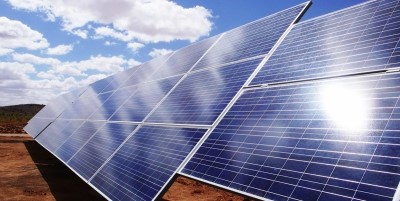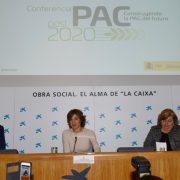25% of photovoltaic plants for self-consumption have agricultural use
The 25% of the photovoltaic plants for self consumption that are raised in national territory are destined to the agricultural activity, mainly to the cultures of irrigation. Specifically, in the last three years, solar plants with a total production capacity of around 25 megawatts (equivalent to 90 football fields) have been installed in the Spanish agricultural sector, which will allow irrigators to save up to 60% in electricity, once the investment in the plates is amortized.
These are data from the Spanish Photovoltaic Union (UNEF), collected by the National Federation of Irrigation Communities (FENACORE) and given today, on the occasion of its technical day on energy production for self-consumption in Madrid.
The progressive role that solar energy has gradually gained in the agricultural sector has its origin in the exponential rise of the electric bill, which in the last eight years has shot up 1000%, forcing irrigators to seek alternatives to compensate for the more than 300 million euros of extra costs they have borne since 2008.
In this way, the reduction of the costs of manufacturing these plates, which in the last decade have been reduced by up to 80%, together with the European Structural Funds, which allow the formalization of state and regional subsidies that cover up to 65% of the investment, are turning the use of sunlight into one of the alternatives with more travel for the irrigation sector.
The versatility and flexibility that characterizes the installation of these plates are other reasons that are contributing to its development in the field
Thus, although the most well-known formula for capturing irradiation is the solar orchards that rise in the land, very popular in Extremadura, Andalusia and the two Castillas, areas with limited space can also have floating plates.
This alternative over water will not only avoid reducing the agricultural extension in the smaller farms, but will increase the efficiency of the raft, since having it covered will keep it at a constant temperature that will minimize the evaporation and, therefore, the loss resources to irrigate.
Only in Andalusia are counted some 10,000 rafts that could be susceptible to harbor floating solar panels
At the back of Europe
While the installation of new photovoltaic power grows timidly in Spain, in Europe the bet is much more determined.
Countries like France or Germany only during the last year installed already more than 550 and 1,500 megawatts of power, respectively
This demonstrates the need for the Administration to speed up self-production in line with the guidelines set by the European Commission.
FENACORE asks the Government to articulate the appropriate framework legislation to promote energy distributed in irrigable areas
A uniciency that would go through an in-depth review of the Royal Decree of Self-Consumption that eliminates the known “tax on the sun” to installations of more than 10 kilowatts of power. By avoiding variable charges based on self-consumed energy, production will be promoted among medium and large consumers.
Given that irrigators are the second largest energy consumers only behind Adif, it will be easier for Spain to reach the targets set by Brussels if it relies on irrigation.
In Spain, only 16% of the energy consumed is of renewable origin, while Brussels sets its target for 2020 at 20%, which, if not met, will lead to the relevant sanctions
In addition, the Administration must see in irrigation an ally also against the adverse effects of climate change, given that each megawatt of solar energy produced prevents the emission of 267 kilos of CO2 into the atmosphere.
For its part, it is also an ally for the user’s pocket, as facilitating self-consumption will achieve a real reduction of energy costs currently borne by consumers by reducing demand to Red Eléctrica Española. In fact, for every euro of income reduction in the system for self-consumption, there is a net profit of five euros for all consumers, thanks to the reduction of the energy price in the pool market and associated taxes.
According to the president of FENACORE, Andrés del Campo, “the irrigators are prepared. We have the exploitations and the luck to live in one of the countries of the world with the greatest solar irradiation. All we need now is the necessary financing conditions to make the investment and the political will to make its development viable.
Andrés del Campo: “irrigation can be an ally not only to meet EU renewable energy consumption targets, but also to become Europe’s energy gateway”
Fuente: FENACORE
TAMBIÉN TE PUEDE INTERESAR:
➡️Fenacore supports a project that will save on irrigation 30% of energy and water

















